Most Memorable Aviation Week Covers Of All Time
March 04, 2016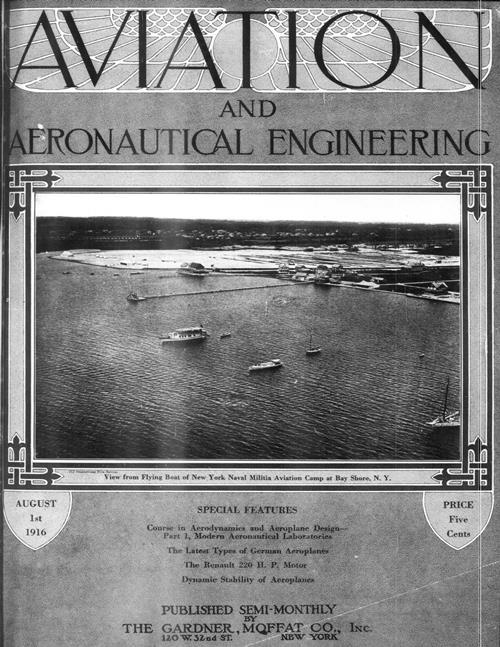
View From Flying Boat of New York Naval Militia Aviation Camp at Bay Shore, New York
An editorial in this inaugural issue of Aviation Week's predecessor Aviation, states: "The amounts necessary for the establishment of aviation on a proper scale in the Army, Navy, National Guard, Naval Militia and Coast Patrol will have to be compared with European Expenditures to show how imperative it is to appropriate millions on millions of dollars for this increasingly important service."
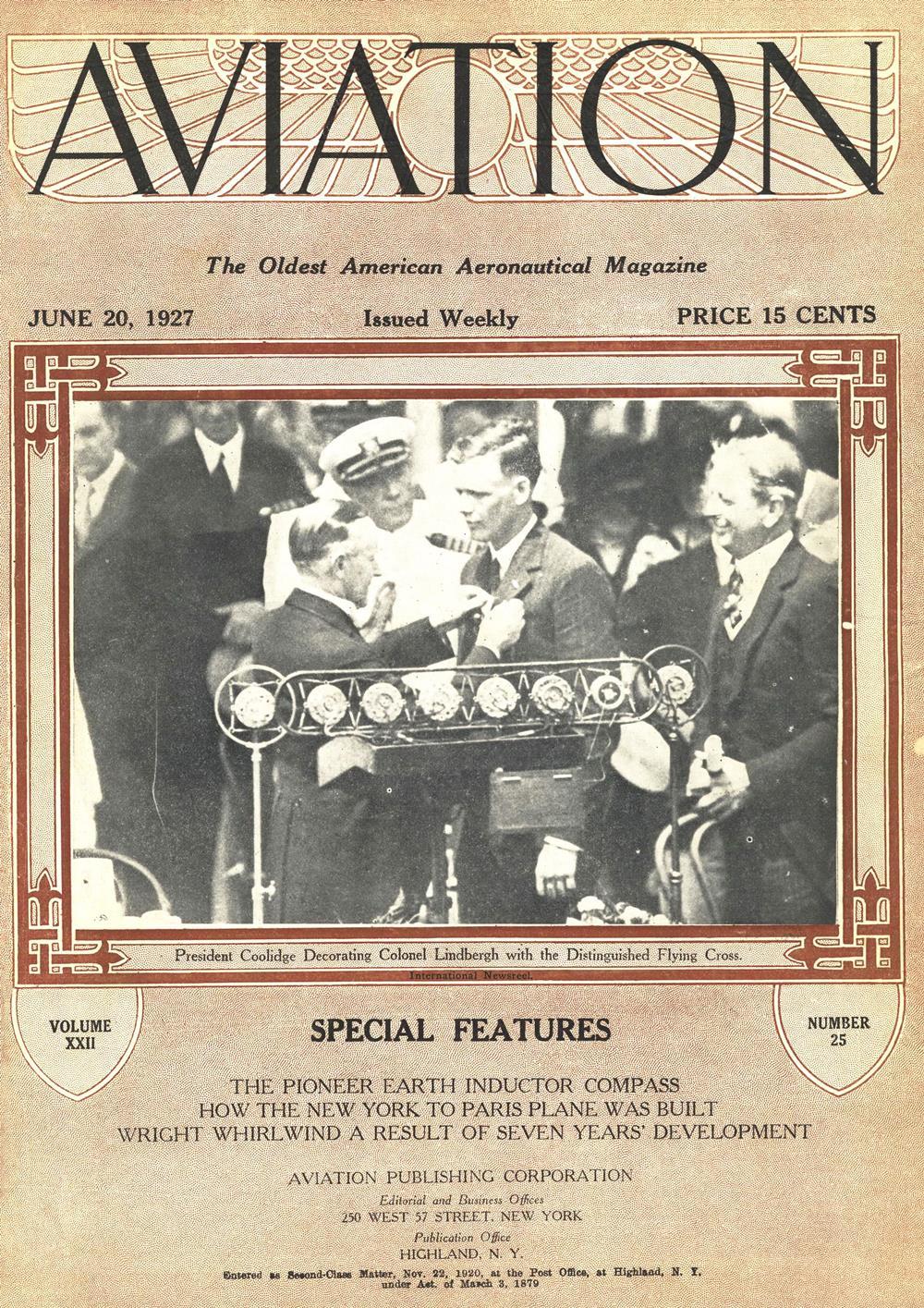
President Coolidge Decorates Col. Lindbergh With the Distinguished Flying Cross
U.S. Army Air Corps Reserve Col. Charles Lindbergh's flight from New York to Paris is described as the "greatest stimulus that aviation has received since the War" in an editorial in this issue.
Lindbergh says he "only blazed the trail," but he showed the world that it could be done and that much hard work and experimentation must be done before a regular transatlantic air service would become an actuality.
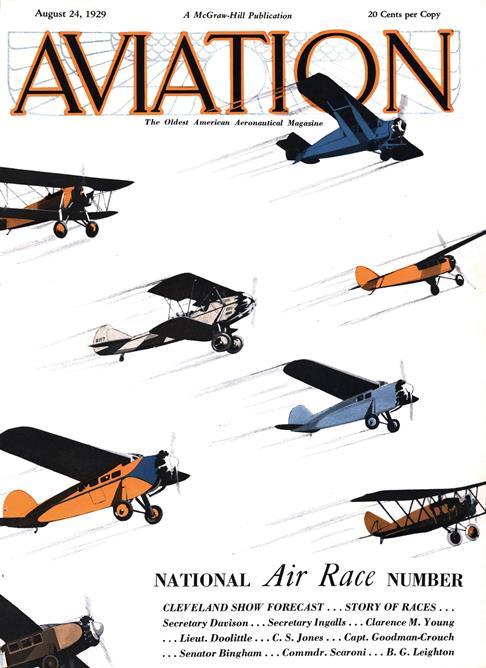
National Air Race Number
The editorial in this issue states: "National Air Races has ten years of history behind it. They did, to be sure, encourage the building of specialized racing machines."
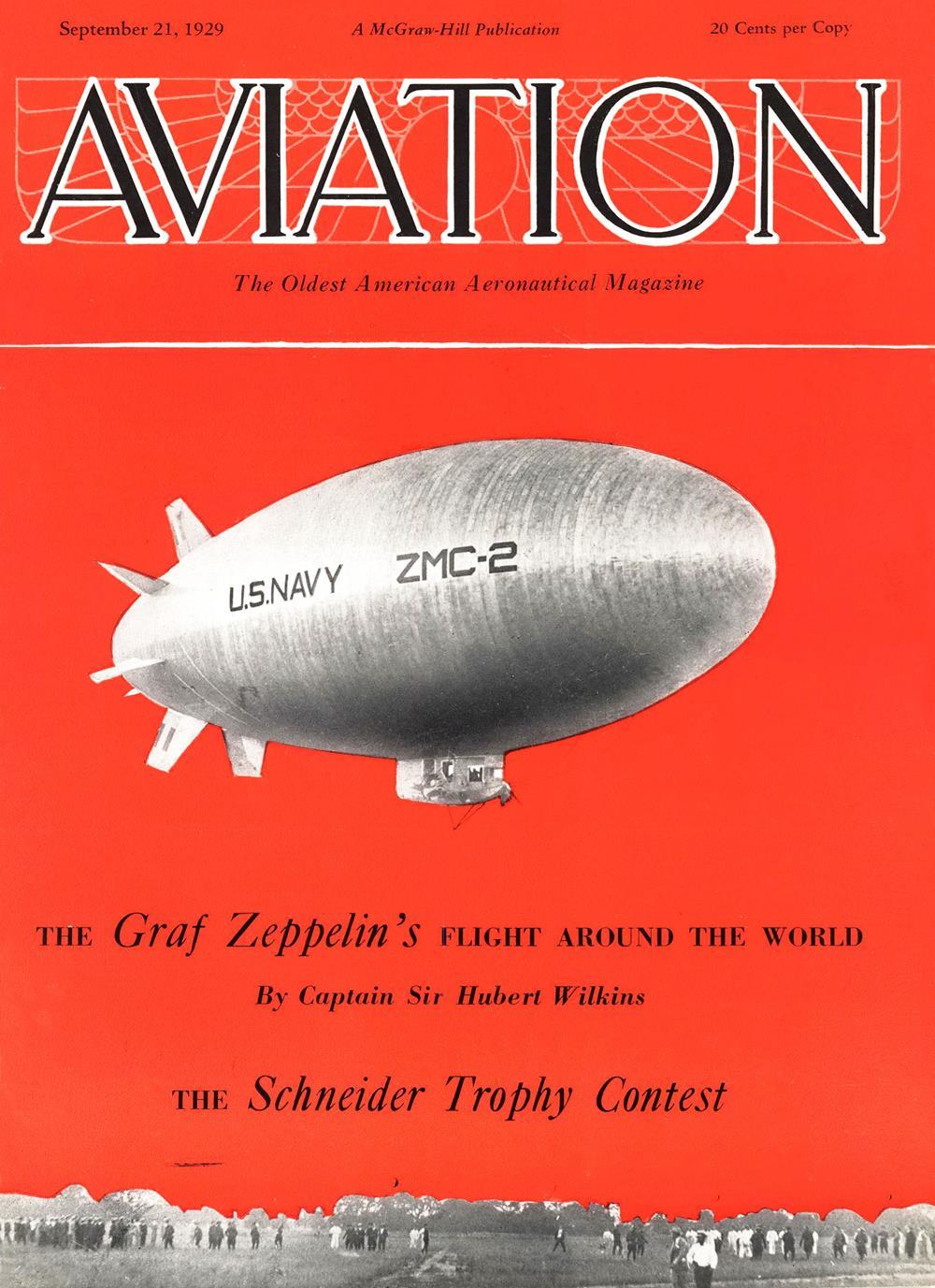
The Graf Zeppelin's Flight Around the World
Australian polar explorer, ornithologist, pilot and photographer Capt. Hubert Wilkins writes in this issue: "A great lesson [to be] learned is that we must thoroughly develop the meteorological services of the world and arrange for greater co-operation."
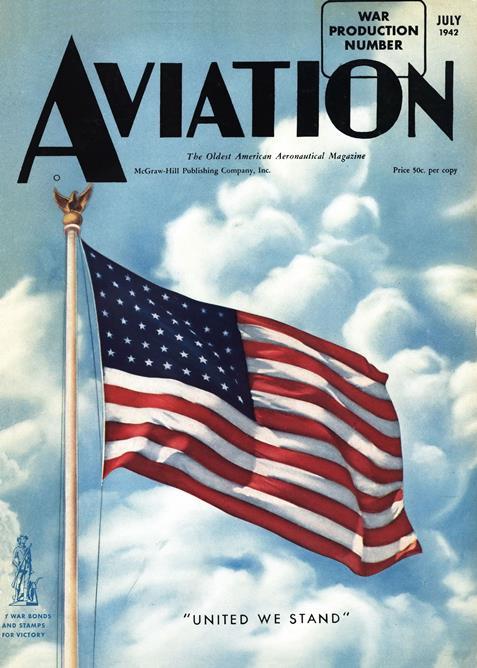
"United We Stand"
"War production is the theme of this issue," states the editorial in this issue. "The mass production of aircraft for war in this country is unquestionably the most stupendous accomplishment of the times."
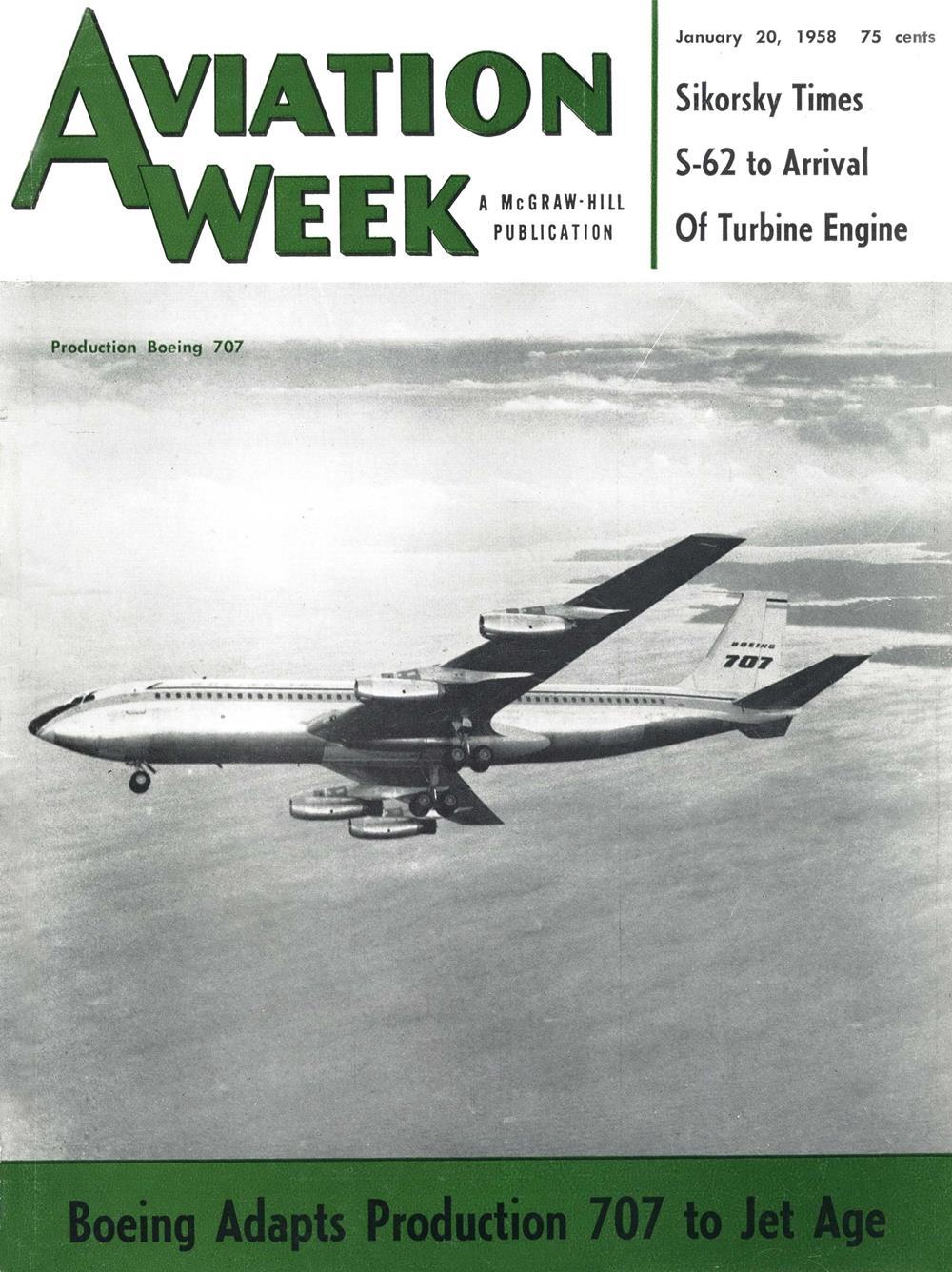
Boeing Adapts Production 707 to Jet Age
"Boeing Airplane Co,. first out with a production American jet transport, has designed a family of airplanes in its 707 series aimed at re-establishing the company at the top of the commercial market in the jet age," writes Richard Sweeney in this issue.

P1127 VTOL Takeoff Sequence
The Hawker P1127 strike fighter demonstrated a vertical takeoff captured in the photo essay about the Farnborough Airshow flying display.
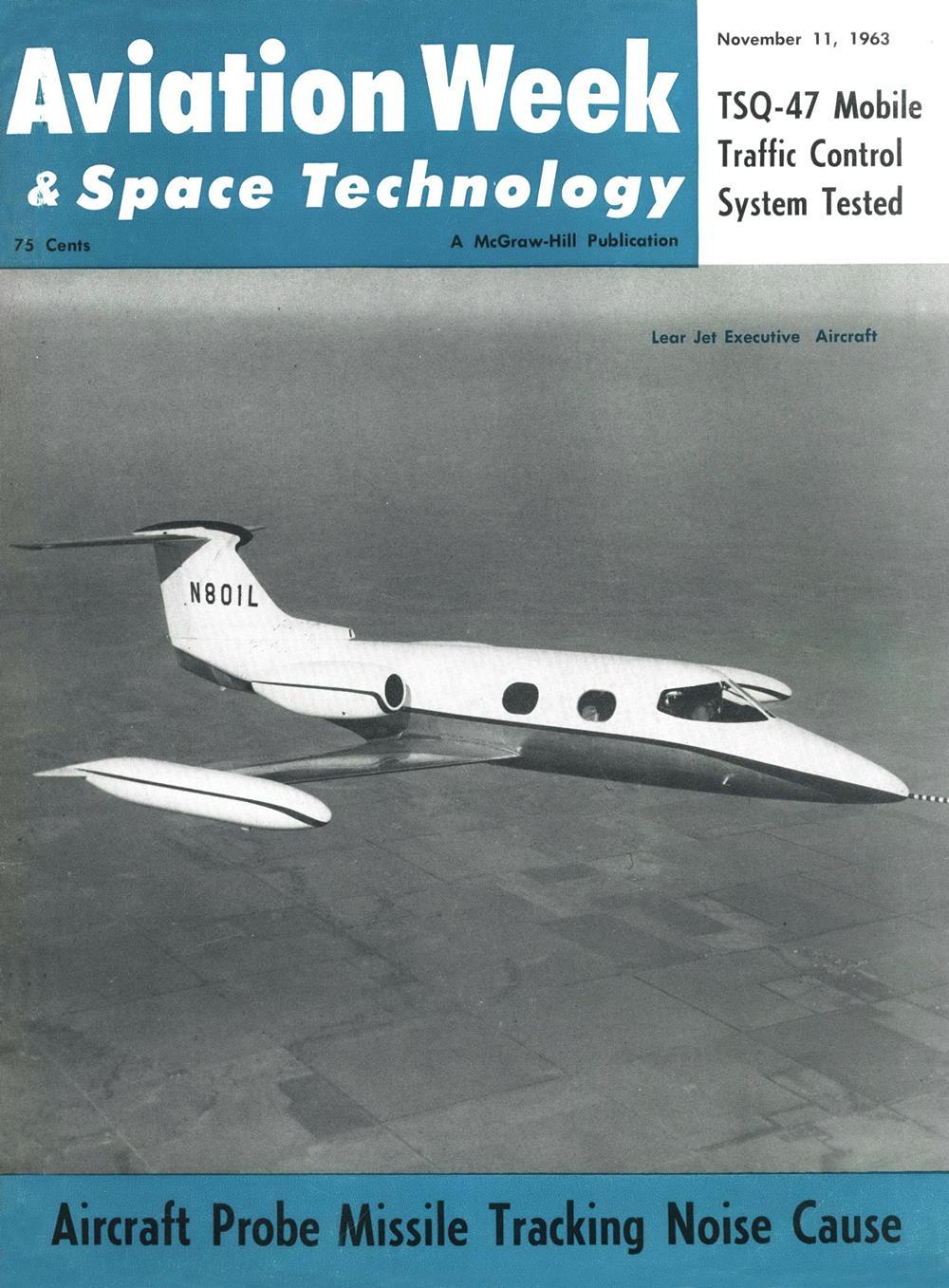
Learjet Executive Aircraft
The No.1 Learjet nine-place executive aircraft, powered by two General Electric CJ610-1 engines producing 2,850 lb. thrust each, is pictured in a new white-top fuselage paint scheme. The aircraft had made its first flight the previous month (AW Oct. 14, 1963, p. 35) and attained true air speed of 605 mph (Mach 0.845) on its fifth flight test from the company's Wichita plant.

U.S. Air Force/North American XB-70A First Flight
A U.S. Air Force/North American XB-70A No.1 climbs out to begin its first flight seconds after leaving the runway at the company's Palmdale, California, facility.
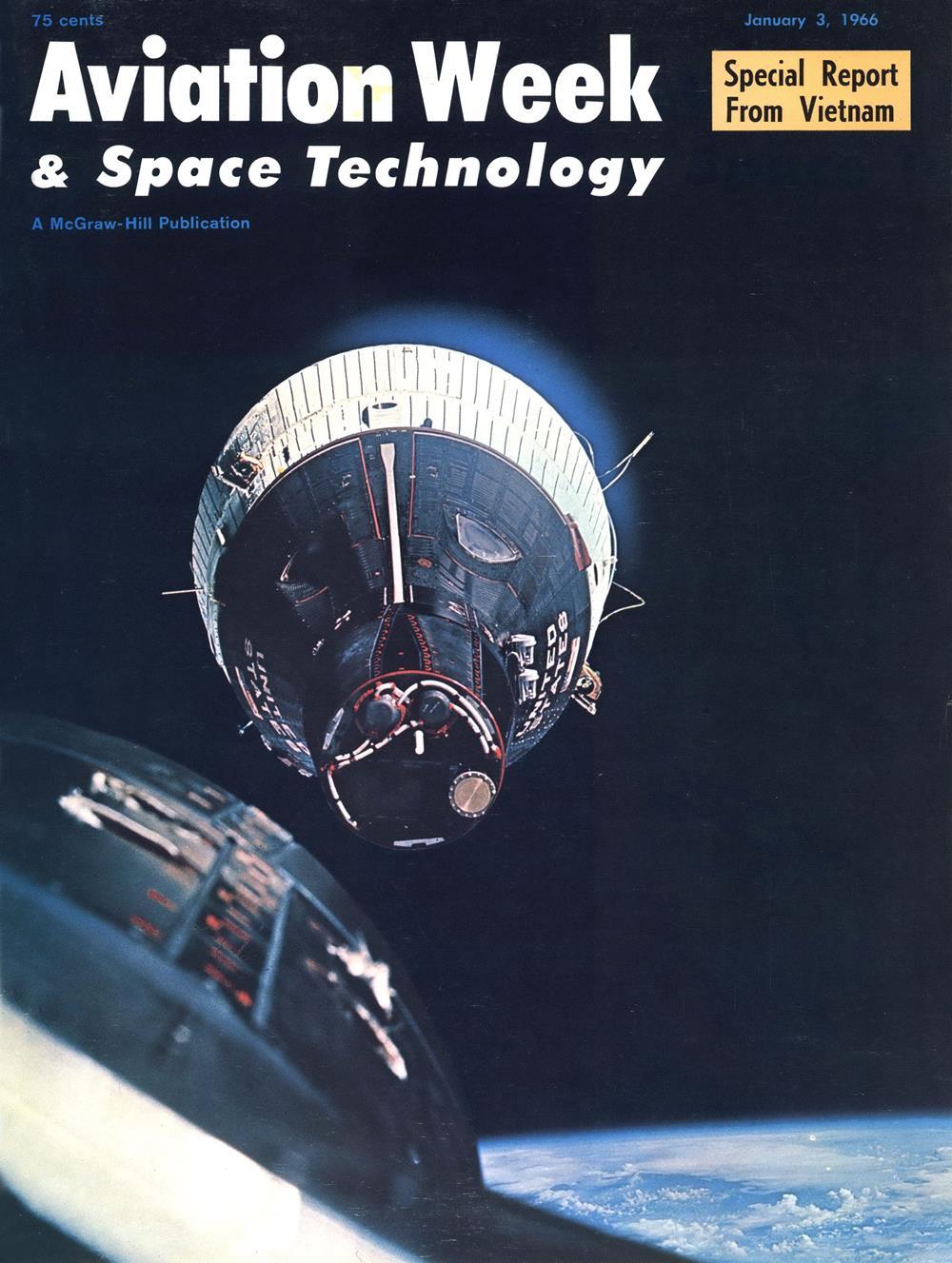
Rendezvous of Gemini 6A and Gemini 7
Gemini 6 astronaut Thomas P. Stafford photographed the Gemini 7 spacecraft during the orbital rendezvous in December 1965.
The issue states that the halation of the Gemini 7 adapter section was still unexplained, although some National Aeronautics and Space Administration photo technicians believed it may have been a characteristic of the special emulsion used on the camera's film.
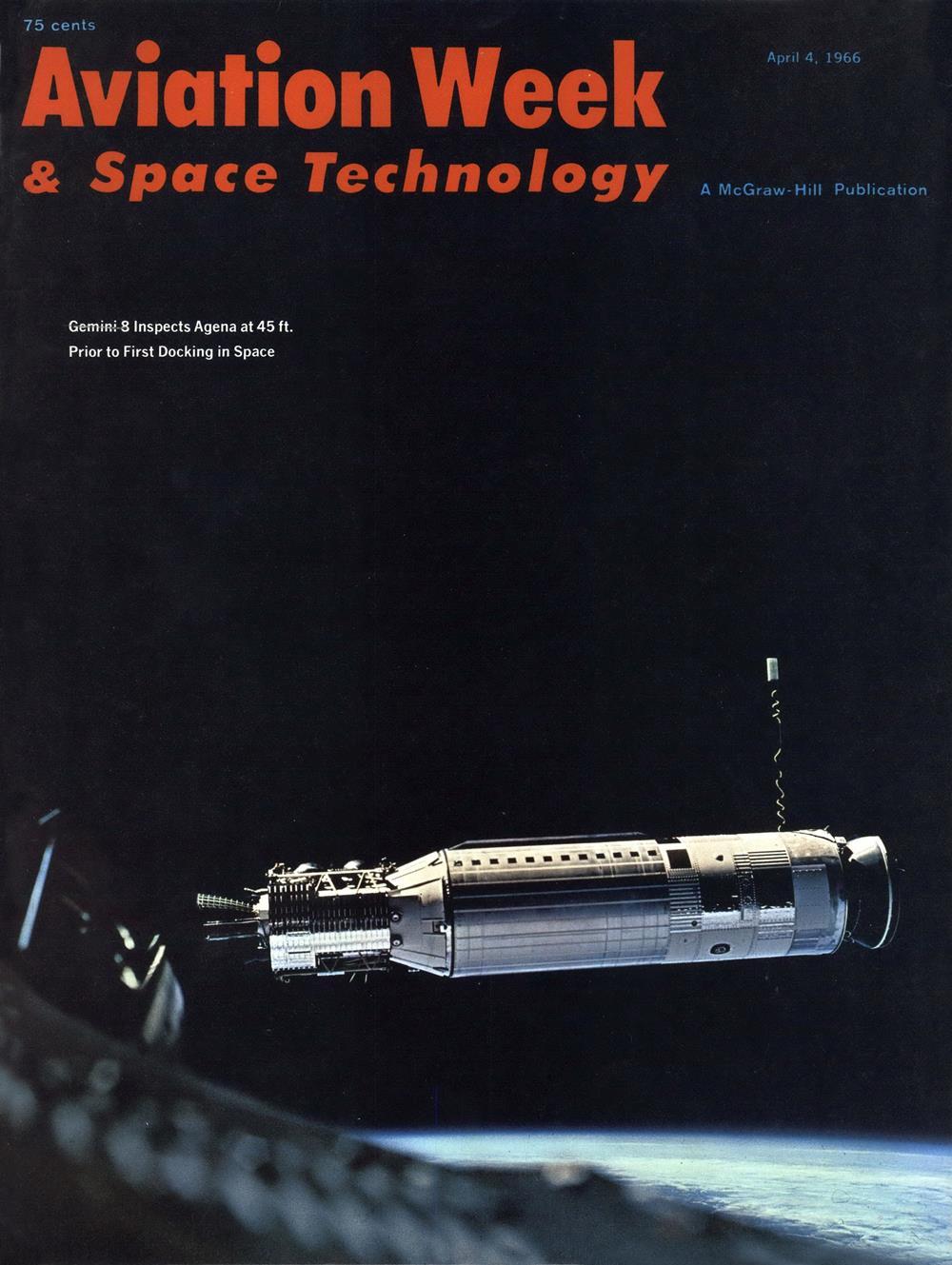
Gemini 8 Inspects Agena at 45 ft. Prior to First Docking in Space
Astronaut David R. Scott photographed the Agena target vehicle as the Gemini 8 spacecraft approached to within 45 ft. before docking in space.

First Boeing 737 Jet Transport
The first Boeing 737 short-medium-range jet was being readied at the company's Seattle facility for its first flight in early 1967.
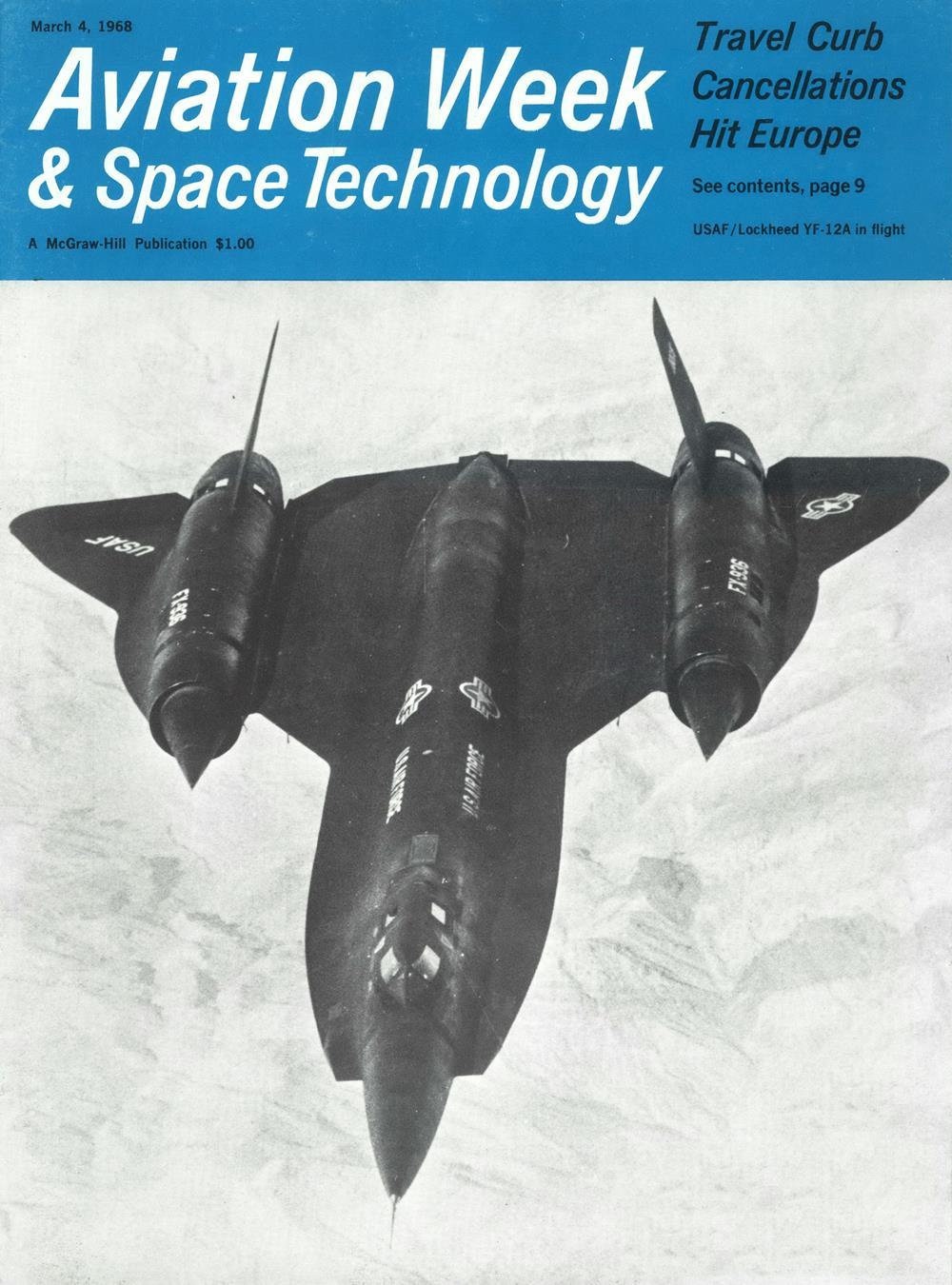
U.S. Air Force/Lockheed YF-12A in Flight
The U.S. Air Force/Lockheed YF-12A interceptor over the Mojave Desert on a training mission.

First Boeing 747 Giant Jet Transport
The rollout day crowd surges around the No.1 Boeing 747 giant jet—freshly decorated in red, white and blue that replaced the company's traditional yellow and brown livery—after it emerged from the final assembly facility in Seattle.
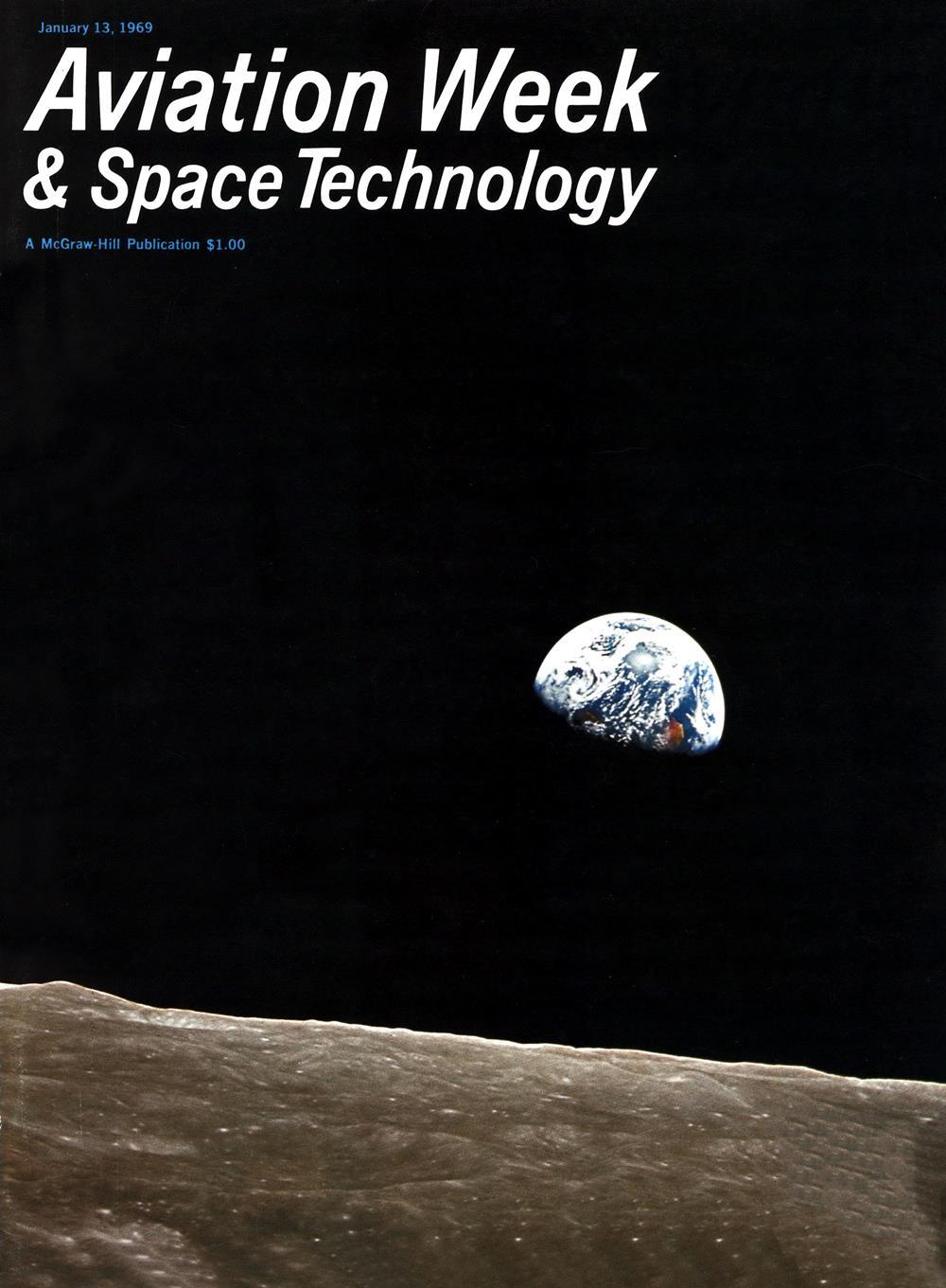
Apollo 8's First Look at the Moon in Color
Earth rises above the lunar horizon as the Apollo 8 spacecraft emerges from behind the far side of the Moon for the first time Dec. 24, 1968, after the successful burn for lunar orbit insertion.
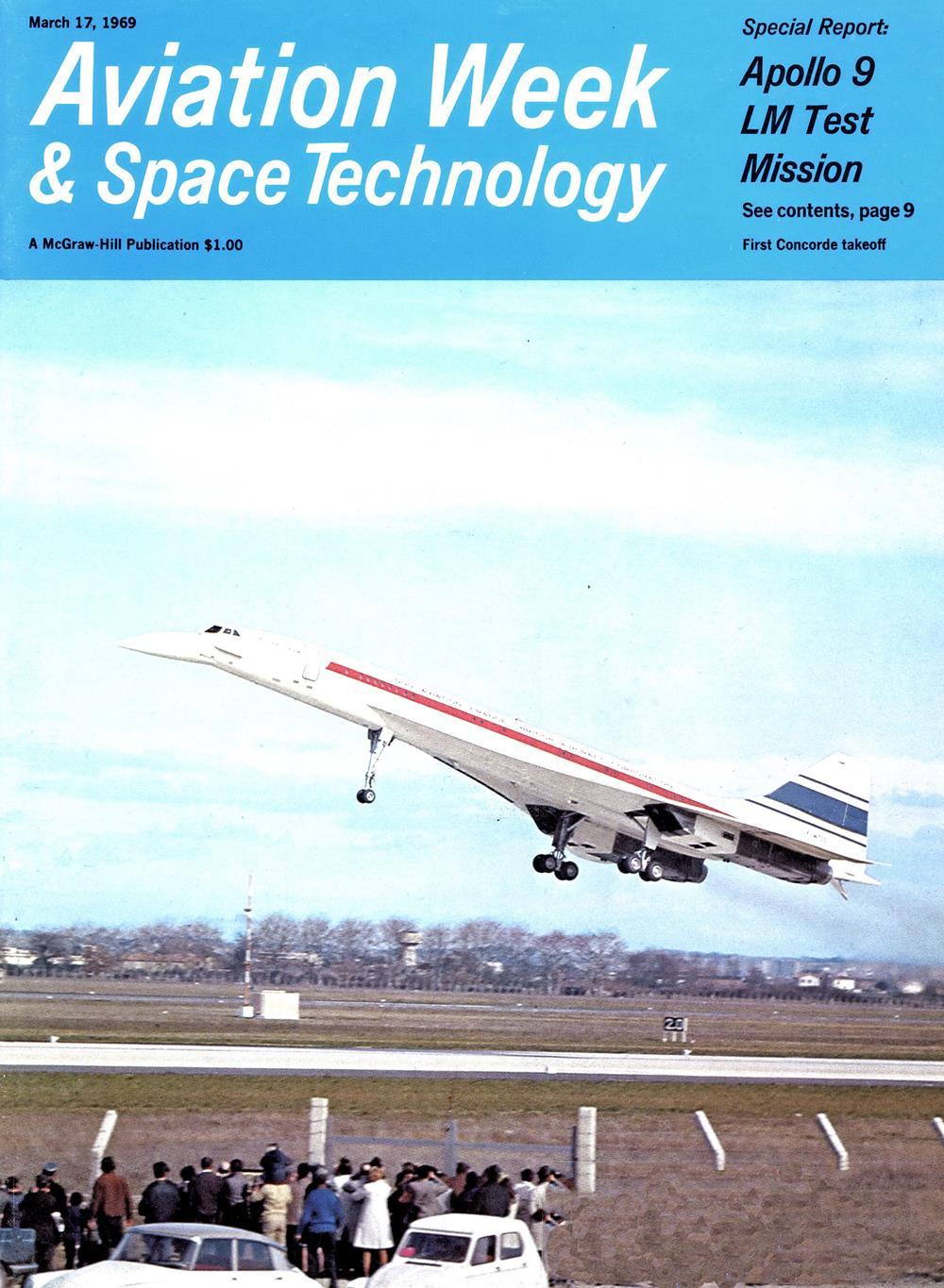
First Concorde Takeoff
Spectators line the fence to watch the Anglo-French Concorde supersonic transport prototype 001 takeoff from Toulouse-Blagnac Airport on its first flight March 2, 1969.
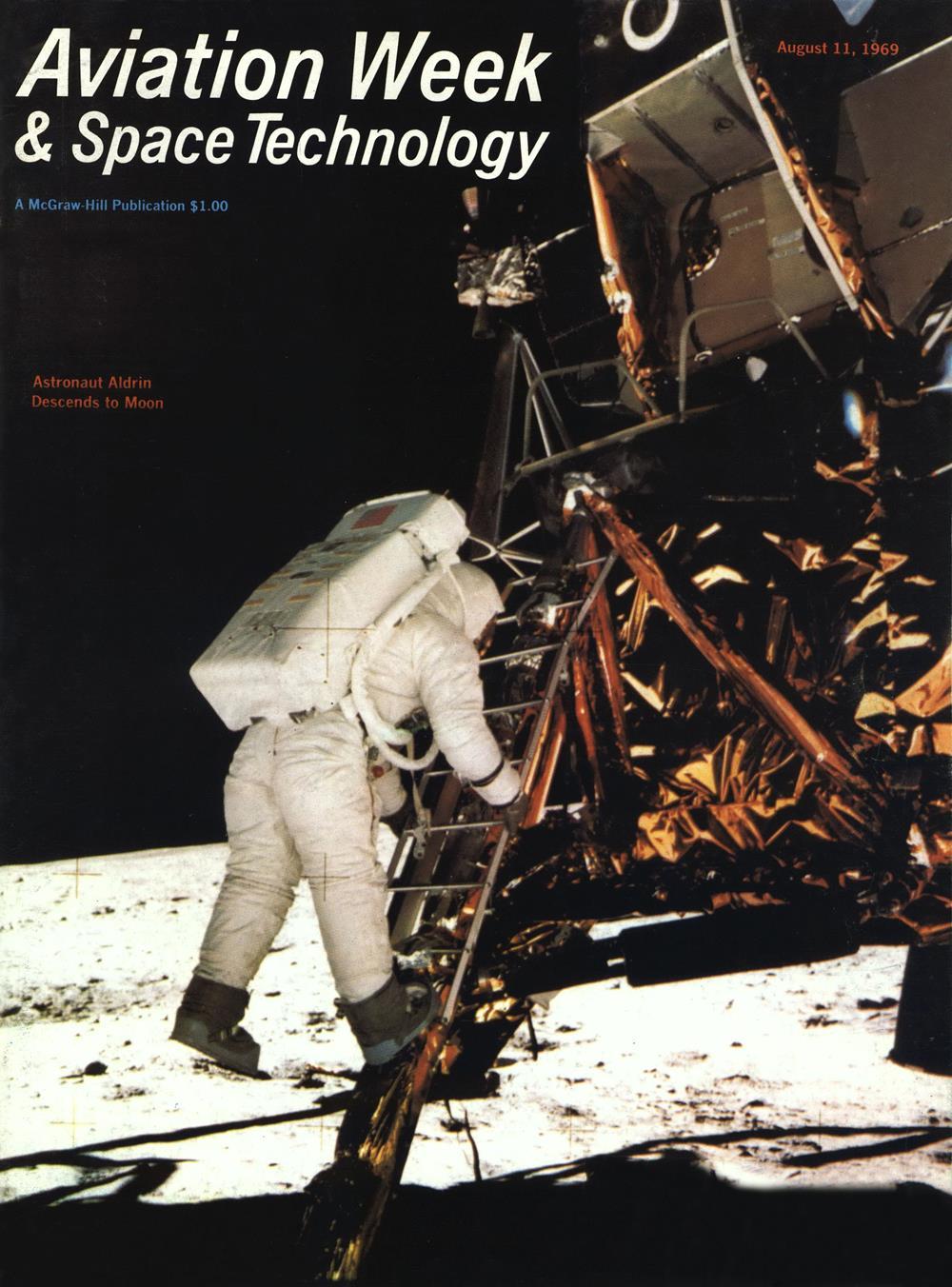
Aldrin Descends to the Moon
Astronaut Edwin E. "Buzz" Aldrin, Jr., stretches his left foot toward the landing pad of Apollo 11 as he descends to the Moon on July 20, 1969. Note the extensive thermal blanket on lunar module's descent stage and the landing probe bent along the surface between Aldrin's feet. Photo by Apollo 11 Cmdr. Neil A. Armstrong.
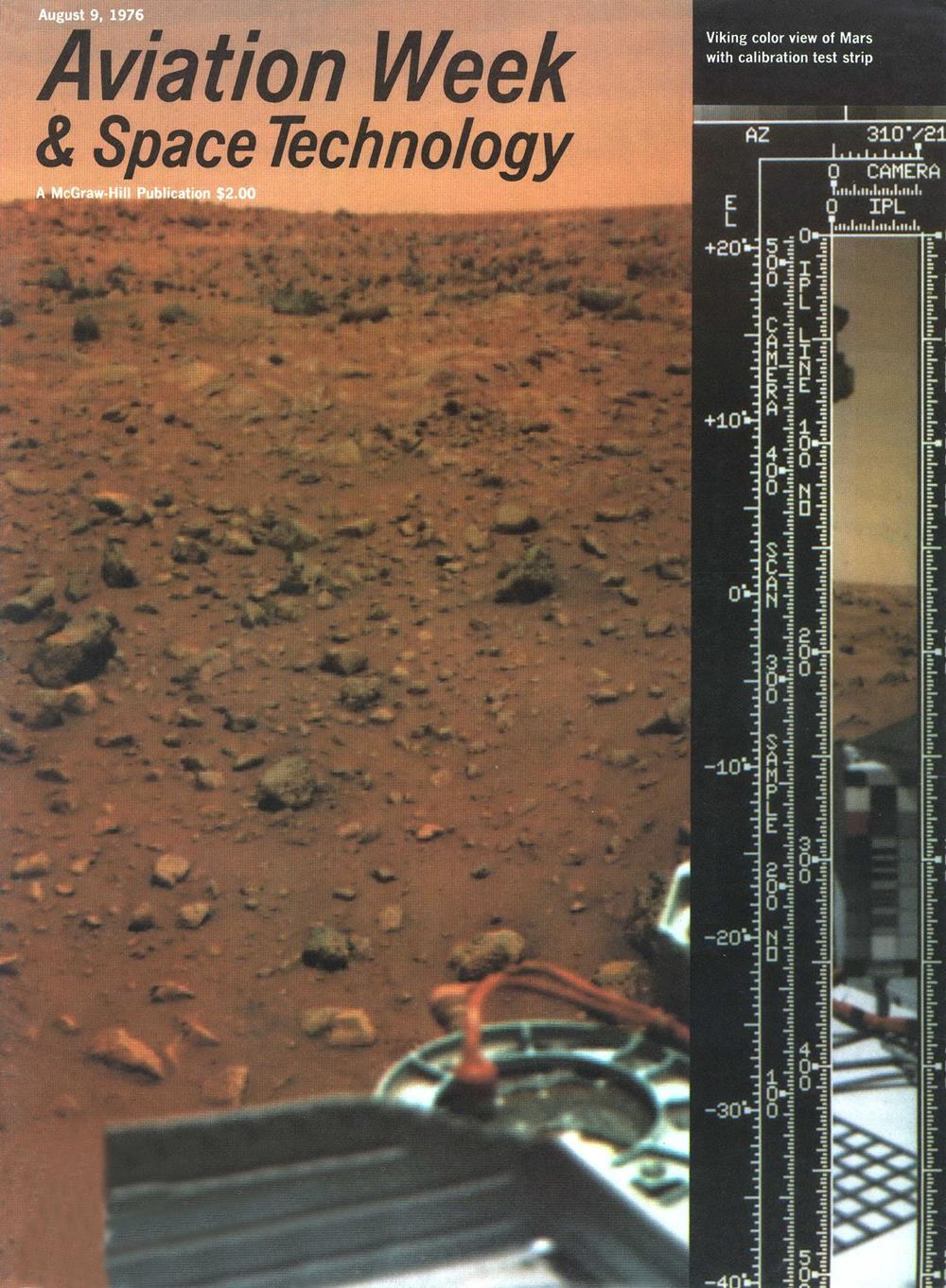
Viking Color View of Mars With Calibration Test Strip
Color balancing of Viking 1 lander imagery with the aid of a test strip on a spacecraft-mounted color chart produced what experimenters consider authentic rustic-red Martian surface and peach-colored sky.
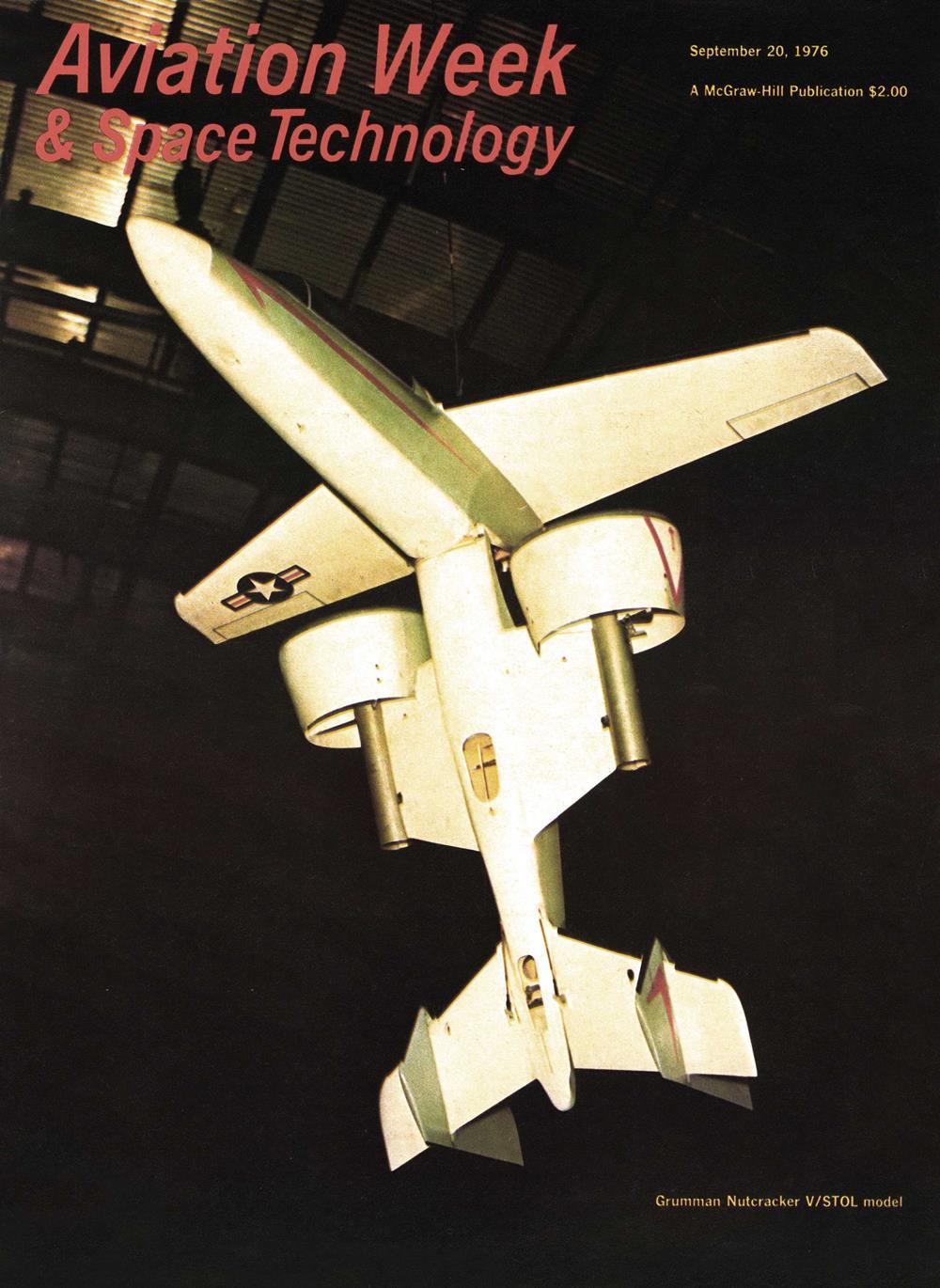
Grumman Nutcracker V-STOL Model
A Grumman Nutcracker vertical/short-takeoff-and-landing aircraft model hovers in tethered vertical flight in a company hangar.
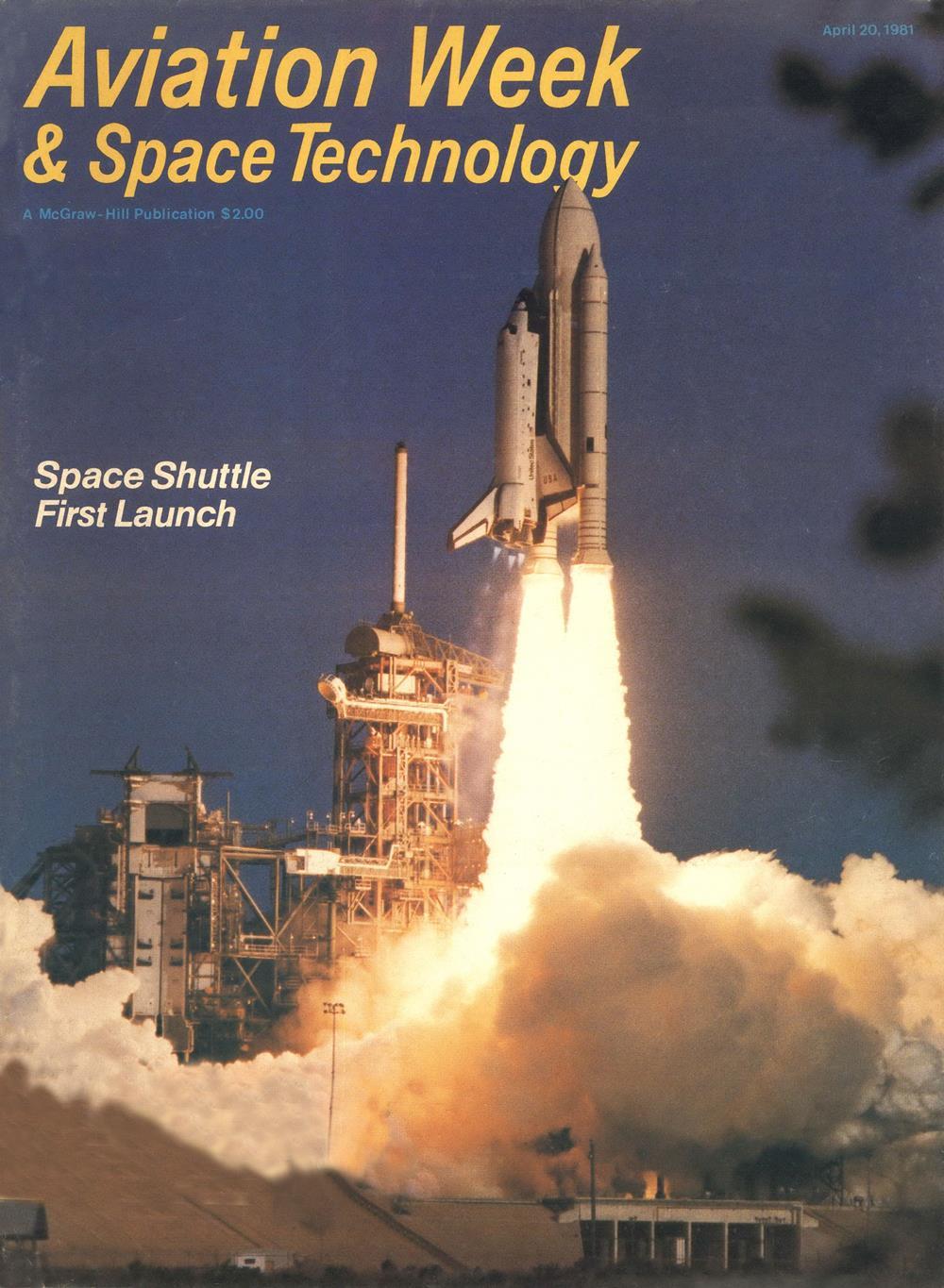
Space Shuttle First Launch
The space shuttle Columbia, attached to its external liquid hydrogen/oxygen fuel tank and twin solid rocket boosters, accelerates away from Launch Pad 39A at the Kennedy Space Center in Florida following liftoff on its first test mission April 12, 1981.
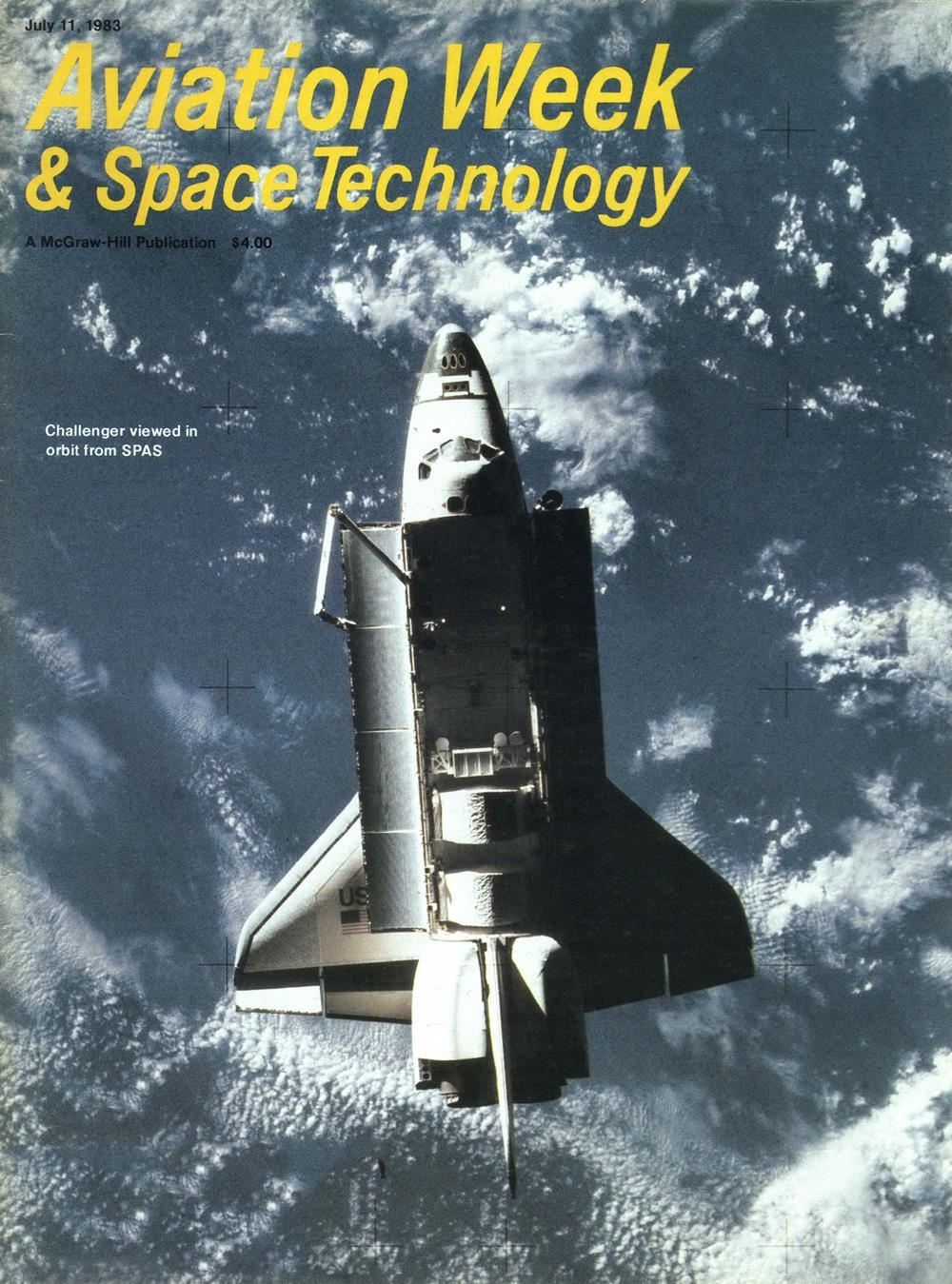
Challenger Viewed In Orbit from SPAS-01
The shuttle Challenger photographed from the German instrument package SPAS-01 deployed and recovered by the STS 7 shuttle mission.

Astronaut Flies Martin Manned Marietta MMU in Orbit
Astronaut and U.S. Navy Capt. Bruce McCandless flies the Martin Marietta Manned Maneuvering Unit untethered away from the shuttle Challenger while orbiting the Earth at an altitude of 150 nm and a speed of 17,500 mph. during STS 41-B.
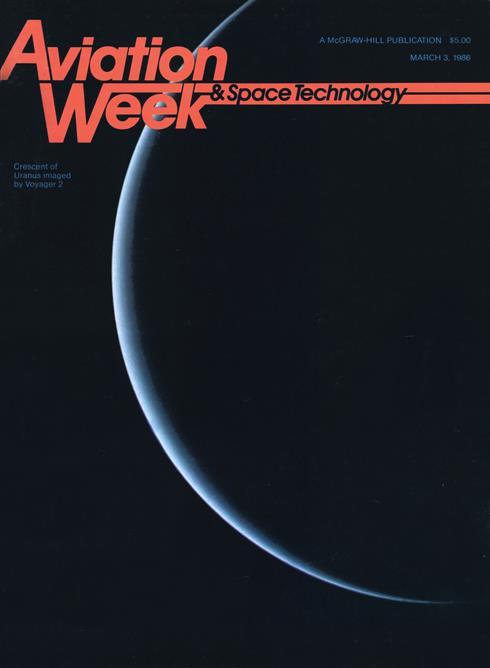
Crescent of Uranus Imaged by Voyager 2
Thin crescent of Uranus was visible as Voyager 2 passed behind the planet at a distance of 600,000 mi. on Jan. 25, 1986. The pale blue-green color of the atmosphere is due to the presence of methane gas, which absorbs red wavelengths of light and leaves a blue hue. Lighter shades at the extreme are the result of a high-altitude haze.

B-2 Bomber Rolls Out
Rollout of the U.S. Air Force/Northrop B-2 stealth bomber at Northrop's production plant revealed a radical flying-wing design without vertical tail surfaces.
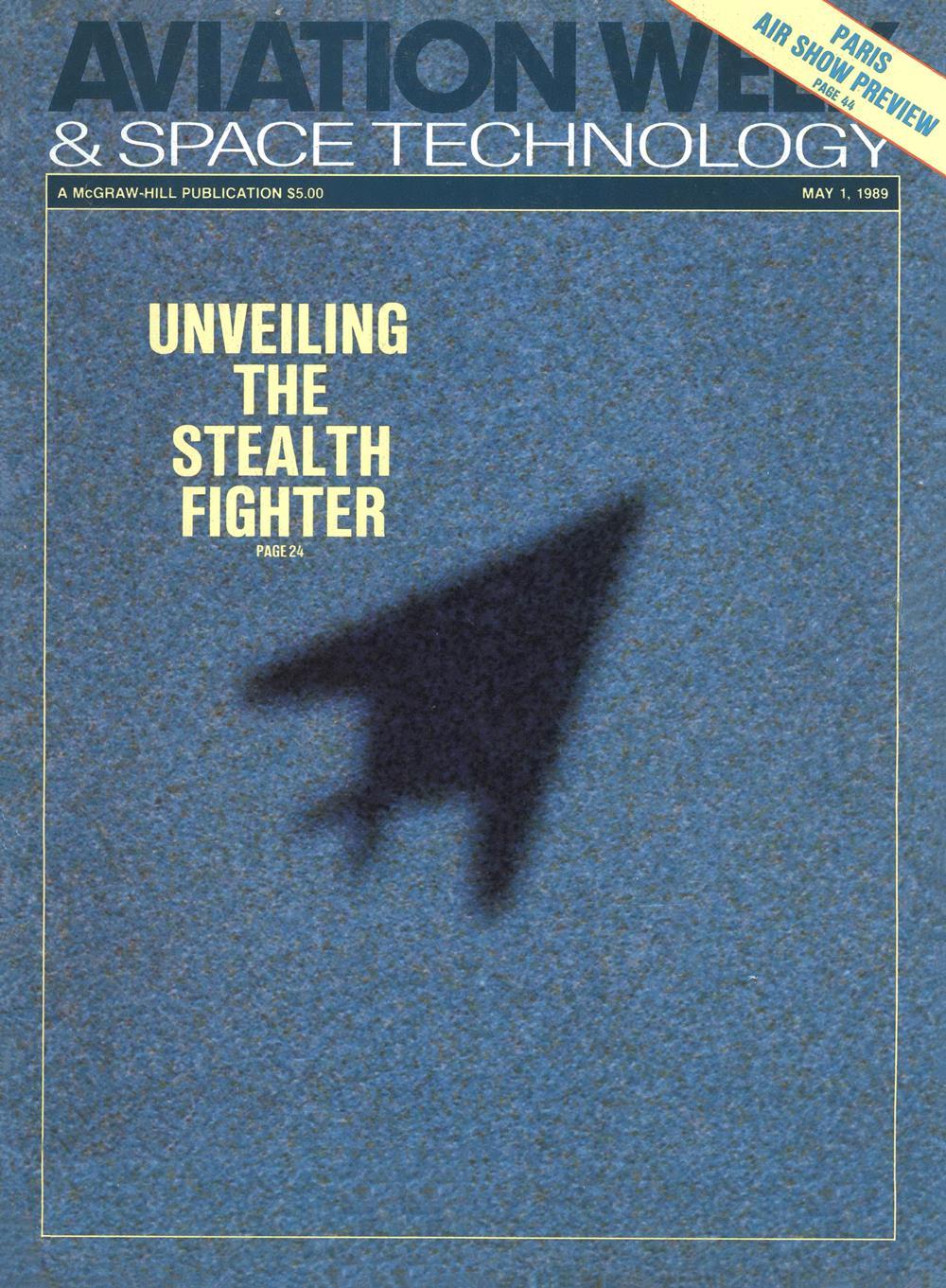
Unveiling the Stealth Fighter
This enlarged telephoto image of a U.S. Air Force/Lockheed 117A stealth fighter shows the aircraft's highly swept wings and distinctive V-shaped tail.
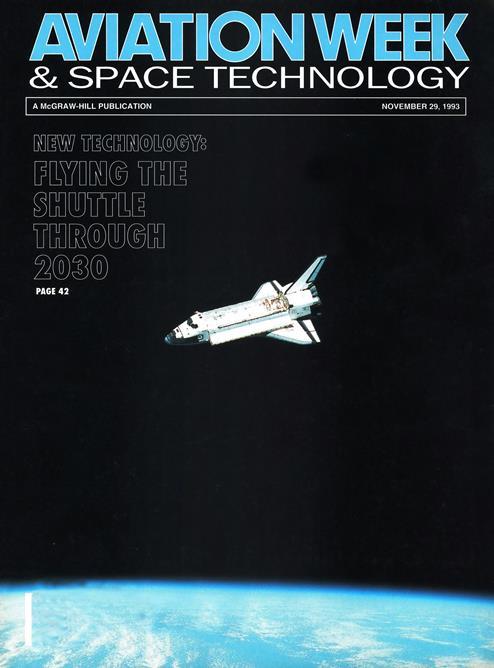
Flying the Shuttle Through 2030
Teh space shuttle Discovery orbits 158 nm above Earth.
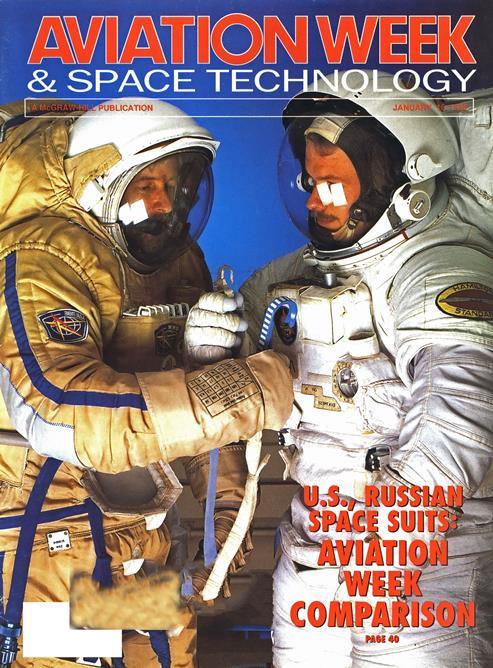
U.S./Russian Space Suits: Aviation Week Comparison
U.S./Russian suits serve diverse extra-vehicular activity goals: Space suits reflect differences in engineering philosophies and program activities and reveal ideologies of the two nations.

Missions to MIR: Prelude to ISS Era
U.S. and Russia hone space station skills: After two of seven joint shuttle flights, confidence builds for assembly of a new international space station in 1997, but Mir's future beyond that is unclear.
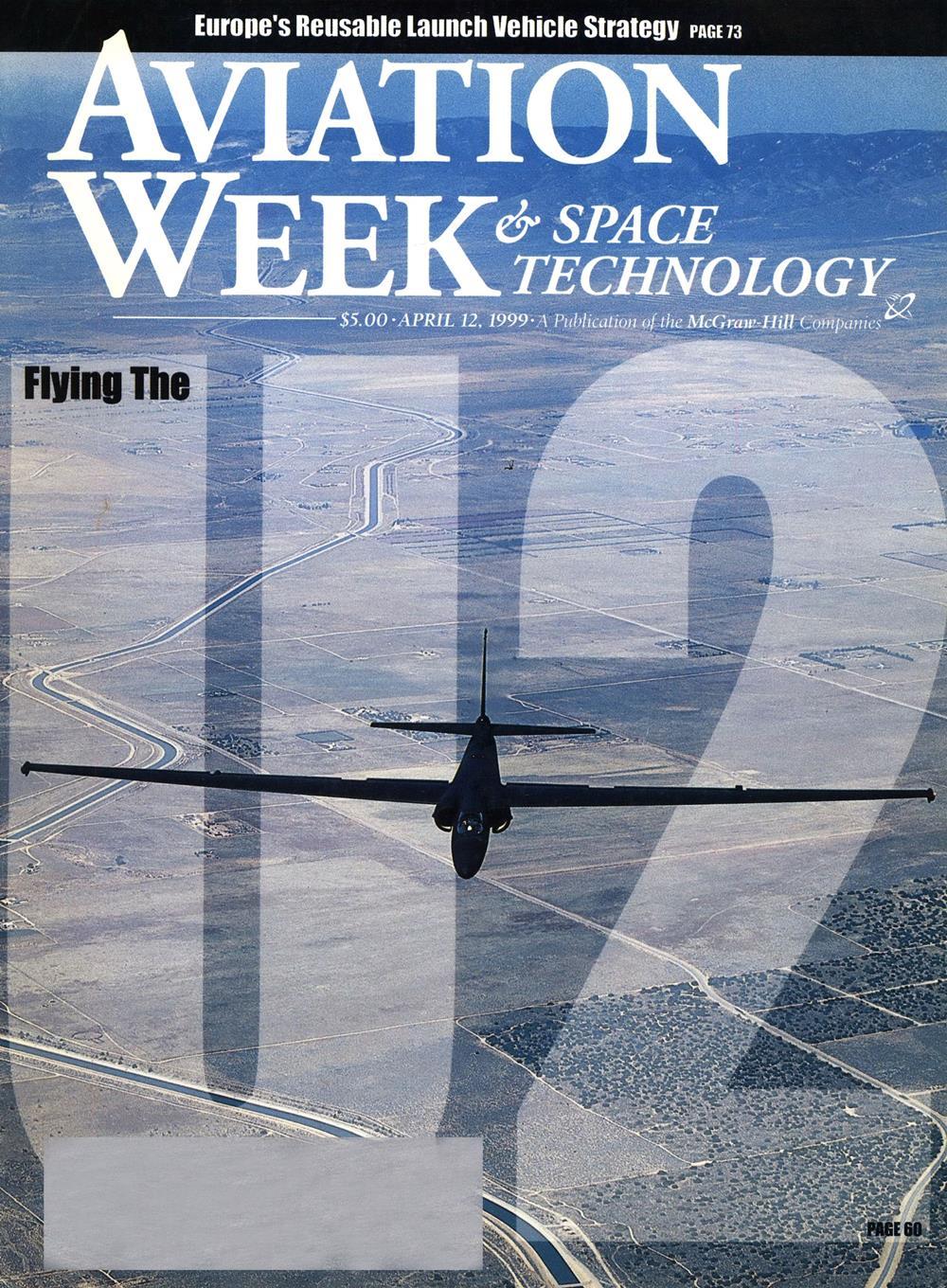
Flying the U2
The first Lockheed Martin U-2S was delivered to the U.S. AIr Force in 1994, and all of the U-2Rs have been converted to U-2s with its General Electric F118-GE-101 engine. This high-altitude reconnaissance aircraft is 40% larger than the initial U-2A of 1955.
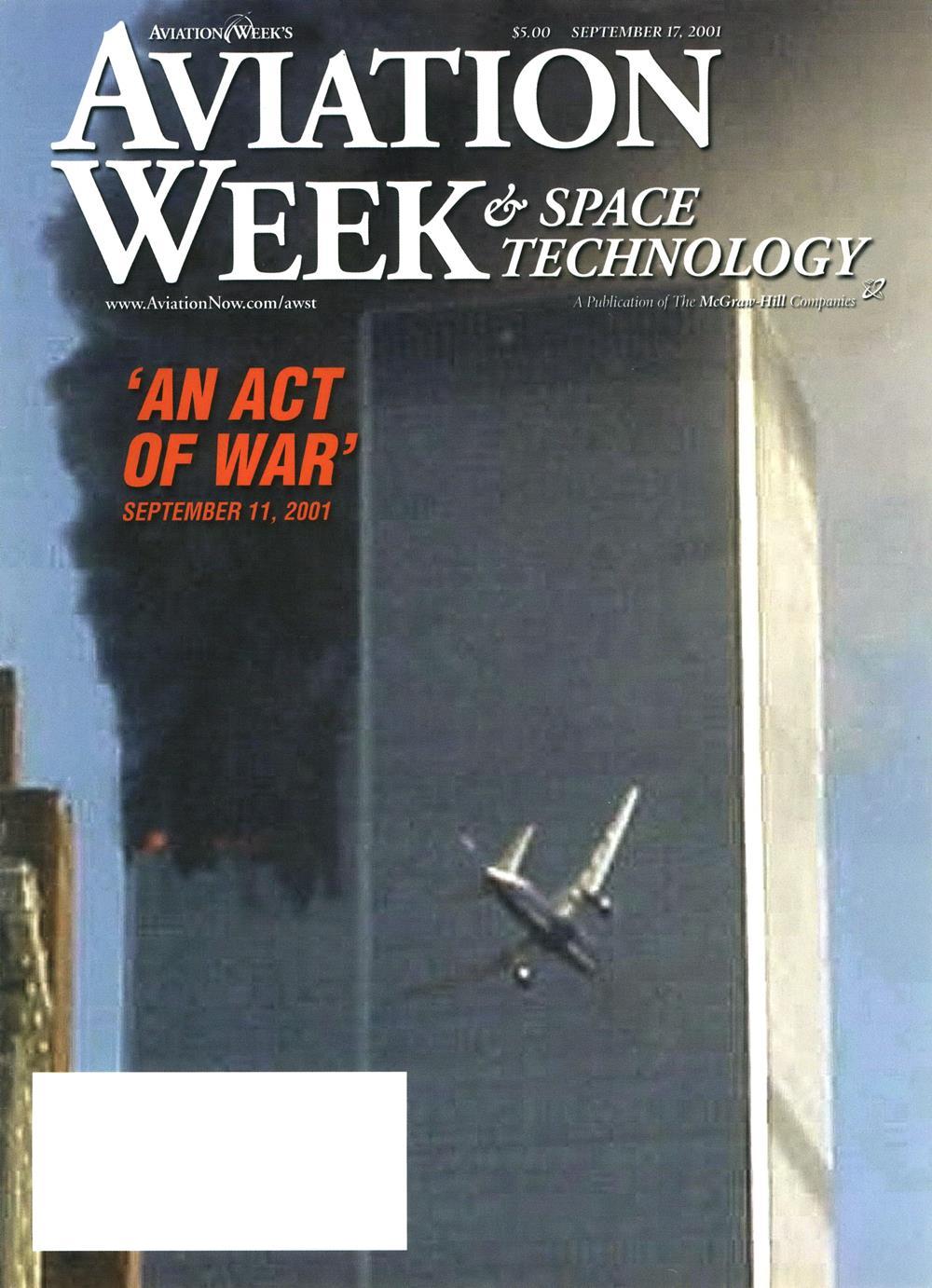
An Act of War: Sept. 11, 2001
In a horrific coordinated terrorist attack, a United Airlines Boeing 767 (Flight 175) banks steeply moments before crashing into the south tower of New York's World Trade Center. Smoke streams from the north tower, which minutes before had been struck by another hijacked 767, American Airlines Flight 11.
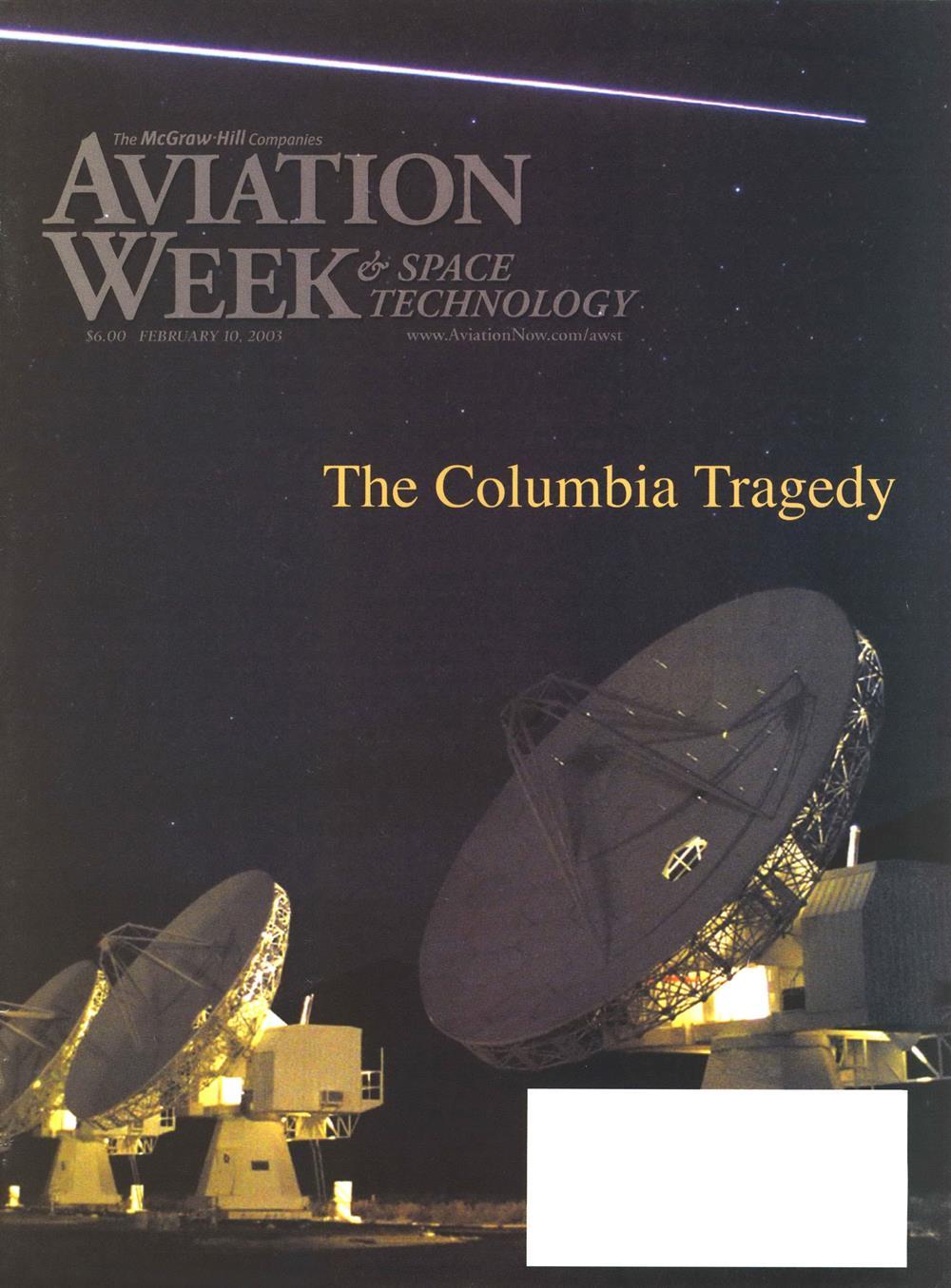
The Columbia Tragedy
The space shuttle Columbia was imaged over the Owens Valley Radio Observatory as it reentered the atmosphere on its final flight. Small parts are probably coming off the orbiter in this picture, which was taken 1-2 min. after telemetry measurements began to fail.
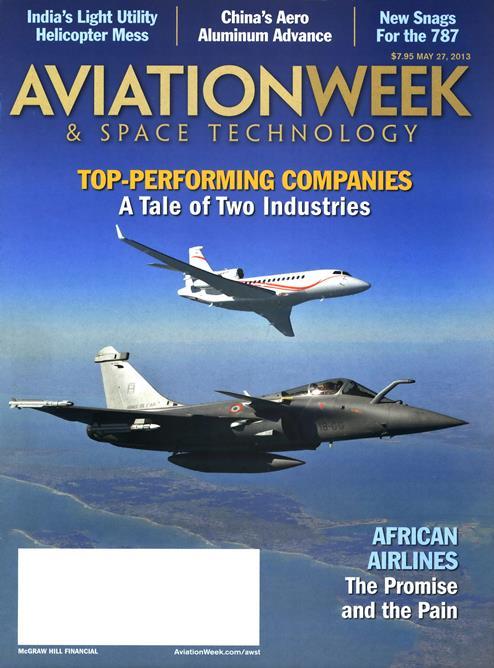
Top Performing Companies: A Tale of Two Industries
A Dassault Falcon 7X business jet and Rafale fighter fly near the Bay of Biscay in southern France. Dassault, the leader in its class, balances defense and commercial business to achieve exemplary results.
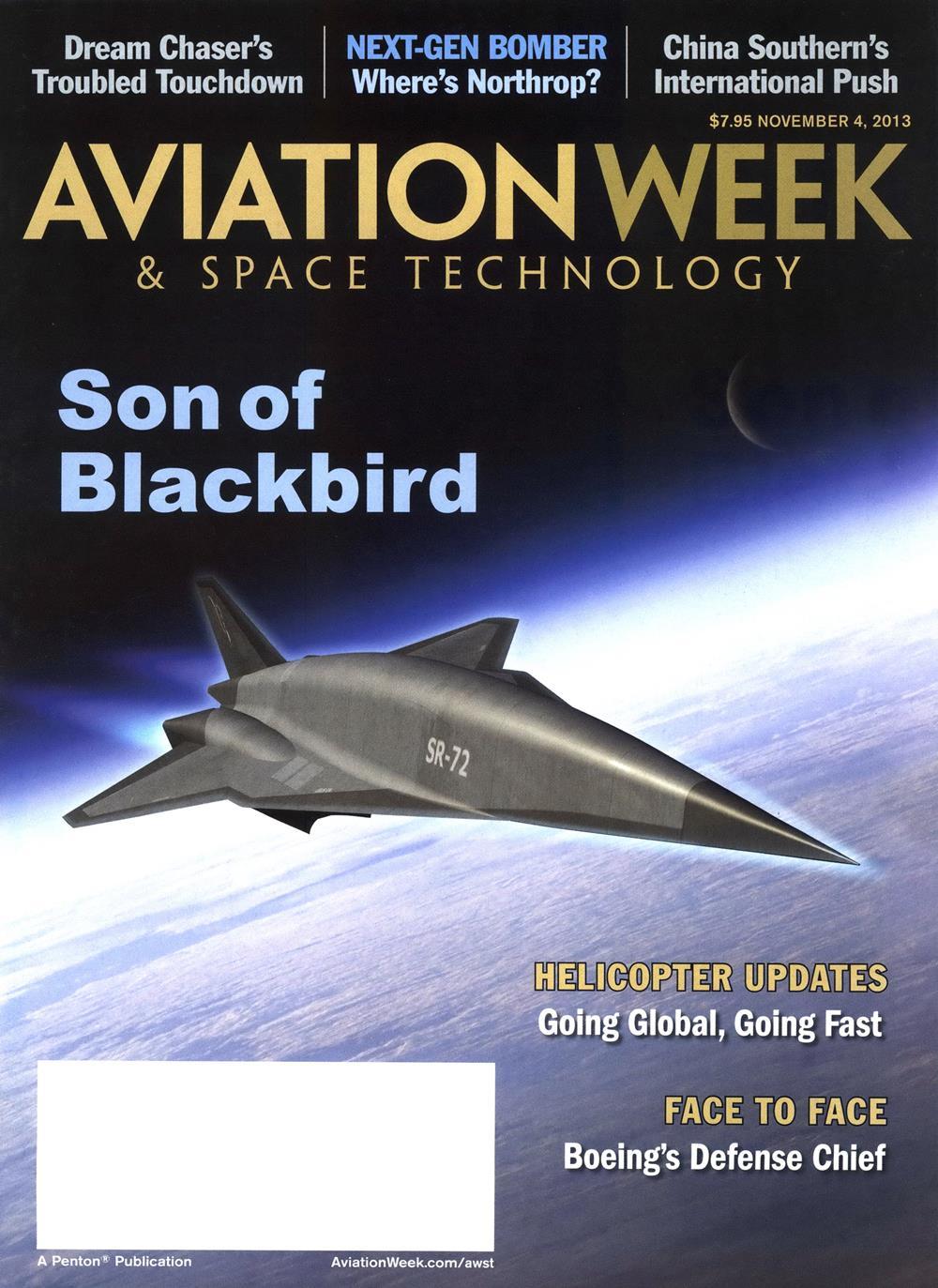
Son Of Blackbird
In an exclusive feature, Lockheed Martin's Skunk Works revealed to Aviation Week the proposed SR-72, Mach 6 successor to its long-retired SR-71 Blackbird spy plane. Aviation Week dubbed it the "Son of Blackbird."
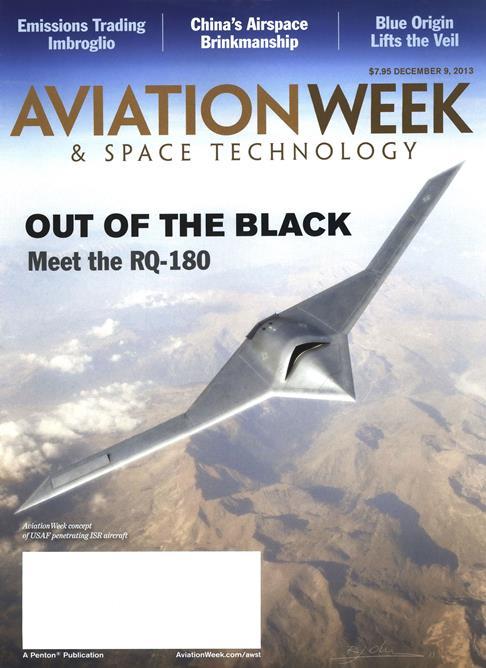
Out of the Black: Meet the RQ-180
The U.S. Air Force RQ-180 unmanned aircraft is believed to be capable of penetrating the most advanced air defenses. We collaborated with an artist to create this conceptual illustration of the RQ-180 based on government and industry information, public documents and basic design principles.

Never Again: Fixing Global Flight Tracking After MH370
In the wake of a Malaysian Airlines Boeing 777 vanishing, aviation worked to make global flight tracking a reality.
From the entirety of Aviation Week's 100-year archive, Aviation Week editors have selected the covers featured in this gallery as among the most remarkable. See what makes each cover 'memorable', and click here to vote for your favorite.